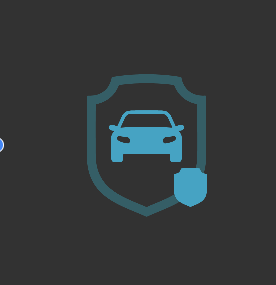Chronic diseases, such as heart disease, diabetes, and arthritis, are among the leading causes of death and disability in the United States. According to the Centers for Disease Control and Prevention (CDC), 6 in 10 adults in the U.S. live with at least one chronic disease, and 4 in 10 adults have two or more. The good news? Many chronic diseases are preventable and manageable with the right lifestyle changes and proactive healthcare. In this blog, we’ll explore practical steps you can take to prevent chronic diseases and effectively manage them if you’ve already been diagnosed.
Related Ads
What Are Chronic Diseases?
Chronic diseases are long-term health conditions that often progress slowly and require ongoing medical attention. Some of the most common chronic diseases in the U.S. include:
Heart disease (the leading cause of death)
- Diabetes (Type 2 diabetes is largely preventable)
- Chronic respiratory diseases (e.g., asthma, COPD)
- Cancer
- Arthritis
Obesity (a major risk factor for other chronic conditions)
These diseases are often linked to modifiable risk factors, such as poor diet, physical inactivity, tobacco use, and excessive alcohol consumption.
Prevention: The Best Medicine
Preventing chronic diseases starts with adopting healthy habits. Here are some key strategies:
1. Eat a Balanced Diet
- Focus on whole, unprocessed foods like fruits, vegetables, whole grains, lean proteins, and healthy fats.
- Limit added sugars, sodium, and saturated fats, which are often found in processed and fast foods.
- Consider the Mediterranean diet or DASH diet, both of which are linked to lower risks of heart disease and diabetes.
2. Stay Physically Active
- Aim for at least 150 minutes of moderate-intensity exercise per week, such as brisk walking, cycling, or swimming.
- Incorporate strength training exercises at least twice a week to build muscle and improve metabolism.
- Even small changes, like taking the stairs or walking during lunch breaks, can make a big difference.
3. Maintain a Healthy Weight
- Obesity is a major risk factor for chronic diseases like diabetes, heart disease, and certain cancers.
- Focus on gradual, sustainable weight loss through a combination of diet and exercise.
4. Avoid Tobacco and Limit Alcohol
- Smoking is the leading cause of preventable death in the U.S., linked to heart disease, lung cancer, and respiratory conditions.
- If you drink alcohol, do so in moderation—up to one drink per day for women and two for men.
5. Get Regular Check-Ups
- Regular health screenings can catch risk factors like high blood pressure, high cholesterol, and prediabetes early.
- Early detection and intervention can prevent these conditions from developing into more serious diseases.
Managing Chronic Diseases: Living Well with Long-Term Conditions
If you’ve already been diagnosed with a chronic disease, effective management is key to maintaining your quality of life. Here’s how to take control:
1. Follow Your Treatment Plan
- Take medications as prescribed and attend all follow-up appointments with your healthcare provider.
- If you have questions or concerns about your treatment, don’t hesitate to discuss them with your doctor.
2. Monitor Your Health
- Keep track of key metrics like blood pressure, blood sugar levels, or weight, depending on your condition.
- Use tools like glucose monitors, blood pressure cuffs, or fitness trackers to stay on top of your health.
3. Adopt a Healthy Lifestyle
- Even after a diagnosis, lifestyle changes can significantly improve your health outcomes.
- For example, a healthy diet and regular exercise can help manage diabetes and reduce the risk of complications.
4. Seek Support
- Living with a chronic disease can be challenging, but you don’t have to do it alone.
- Join support groups, either in-person or online, to connect with others facing similar challenges.
- Consider working with a dietitian, physical therapist, or mental health professional to address specific needs.
5. Prioritize Mental Health
- Chronic diseases can take a toll on your mental health, leading to conditions like depression or anxiety.
- Practice stress-reduction techniques like meditation, yoga, or deep breathing exercises.
- Don’t hesitate to seek professional help if you’re struggling emotionally.
The Role of Public Health and Policy
While individual actions are crucial, addressing chronic diseases also requires systemic changes. Public health initiatives, such as:
- Promoting access to healthy foods in underserved areas
- Creating safe spaces for physical activity
- Implementing policies to reduce tobacco and alcohol use
- Expanding access to affordable healthcare
can play a significant role in reducing the burden of chronic diseases nationwide.
Conclusion: Small Steps, Big Impact
Chronic diseases may be common, but they don’t have to define your life. By making small, consistent changes to your lifestyle, you can significantly reduce your risk or better manage an existing condition. Remember, it’s never too late to take control of your health. Start today—your future self will thank you!
Call to Action:
What steps are you taking to prevent or manage chronic diseases? Share your tips and experiences in the comments below! If you found this blog helpful, don’t forget to share it with friends and family to spread the message of health and wellness.


